Arm pump—we all know it. That crippling pain that suddenly hits your forearms, wrists, and hands when you are riding your dirt bike on trails or on a motocross track. This unfortunate pain can easily ruin a perfect ride day.
Arm pump is a painful and sometimes dangerous condition where the blood in your forearms is building up and causing swelling, pain, and discomfort. Usually, arm pump in motocross and dirt bike riding is associated with gripping the handlebars too much and not being able to relax the hands and forearms. This is common especially among beginner riders as they are getting used to the proper handling and riding techniques.
- What is arm pump?
- What causes arm pump in motocross and dirt bike riding?
- Why do dirt bike riders get arm pump?
- How to prevent arm pump?
- What is an arm pump surgery?
After reading this post, you will know the answers to these questions. And with our 11 tips, you will learn how to prevent arm pump and how to get rid of it so that you can keep riding your dirt bike for longer on the trails and tracks.
This post contains affiliate links. If you use these links to buy something we may earn a commission at no additional cost to you. As an Amazon Affiliate we earn from qualifying purchases.
What Is Arm Pump?
Arm pump, sometimes also called forearm pumps, is a medical condition where the blood in your forearms is building up and causing swelling, pain, and discomfort.

While the exact causes of arm pump (or CECS – chronic exertional compartment syndrome in the forearm) are still unknown, some similarities can be found across athletes in different sports that commonly can cause it.
Arm pump is commonly associated with sports like motocross, mountain biking, cycling, skiing, wake-boarding, rock climbing, gymnastics, wheelchair athletes, hockey, mixed martial arts, and rowing. Common symptoms include strong fatigue, swelling, pain, and tingling, which is isolated to forearms while the rest of the body feels normal.
Dirt bike riders can experience arm pumping during riding or after a period of rest ranging from 12 minutes to 24 hours. The forearm will typically feel hard and tight and there is pain in the forearm.
The best way to describe arm pump in motocross or dirt bike riding is like a kind of cramp in your forearms, wrists, and hands. Your arms begin to loose strength, your forearm feels like it’s going to explode, and even your fingers can lock-up around the grips so that you can’t let go of the grips to brake or to pull the clutch.
In the worst case scenario, forearm pumps may lead to crashes because riders have difficulties gripping, pulling, and grasping the levers and grips due to pain or weakness and can’t safely maintain control of their dirt bike at higher speeds.
What Causes Arm Pump in Motocross and Dirt Bike Riding?
The process that leads to arm pump begins as soon as you start riding your dirt bike and grip the handlebars.
When you grip the handlebars, this causes increased blood flow to the muscles in the hands and forearms. Because of the tension of the grip and the bike, arms remain contracted for a long time causing the blood vessels to restrict blood flow out of the forearms.
While the blood is backing up, more blood is continuously being pumped into the forearms. The blood buildup causes swelling in the muscles and forearms resulting in even more restricted blood flow. The muscles can expand only until the limits of the fascia, a tissue covering the muscles, are reached.
This results in muscles in forearms becoming rock hard—in other words in arm pump. Forearms start to ache and you experience loss in grip strength. Hands can also feel numb, muscles of the forearm can start to cramp, and weakness or clumsiness may occur.
Arm pump is very common in motocross and dirt bike riding. Luckily, it’s nothing serious and there’s really no need to worry about it. All riders—including pro riders—experience it regularly.
Why Do Dirt Bike Riders Get Arm Pump?
There can be several factors that lead to arm pump when doing motocross or riding on dirt bikes.
Usually, arm pump is related to the way you ride, the way your dirt bike is set up, or even the lack of riding. Some of the main causes of forearm pumps in trail riding is excessive grip, vibration, and wrist movement.
The reason why these things cause arm pumping is the fact that your muscles are not strong enough and they are not used to do what you are asking them to do. This means that your muscles have not yet build up a conditioning.
Beginner riders tend to experience arm pump more than riders that have been riding dirt bikes longer. This is because their arm muscles are only getting used or adapting to the riding. In other words, the they have not yet been conditioned.
Another reason why you may be experiencing arm pumping is if you have not been riding regularly. Hitting the dirt bike trails or a motocross track after taking a break or because of an injury can make your arms pumping. This means that you have lost some of that conditioning you once built up.
In both of these scenarios, the best way to improve your riding fitness and get rid of arm pump is to ride as much as possible. In other words, the more you ride, the more conditioned your forearms become.
However, even the experienced or very skilled riders can get arm pump from riding too much. This can happen if you are riding too frequently or more often, for a longer period of time, or on a more challenging trail than you usually do.
In this scenario, you can avoid arm pump from happening and boost your endurance in your forearms by starting other sports, such as climbing or rowing, like many pro enduro and motocross riders do.
11 Tips for How To Prevent Arm Pump
There are various ways to get rid of arm pump in motocross, enduro dirt biking, and trail riding. The methods for how to prevent arm pump can be split into four different categories:
- Dirt bike setup
- Preventative exercises
- Warming up and cooling down
- Riding tips
Firstly, setting up your dirt bike better can help prevent or reduce arm pump. There are several things in your dirt bike setup that can cause forearm pumps or make them worse.
Secondly, you can also prevent arm pump with several exercises and simply by staying active even when you are not able to hit the trails. Thirdly, properly warming up and cooling down also play a big role in reducing arm pump.
Finally, changing few things while riding can make a big impact on how to get rid of arm pump altogether.
A holistic approach is ultimately the best way to fight arm pumping. If you check only one or two of these categories off the list but neglect the rest, your forearm pumps may get better but most likely your problems will not completely go away.
So the best way to make sure to get rid of arm pump is to follow all of these 11 tips below.
1. Tweak Your Handlebar Setup
Riding ergonomics plays a big part in how easily you can get arm pump. Wrong handlebar height, wrong lever setup, or incorrectly positioned handlebars and levers can cause hand fatigue and forearm pumps or increase the chances for experiencing it.
The goal is to be able to relax and grip the handlebars in a way that does not increase hand fatigue. An incorrect lever positioning or bad ergonomics can cause you to grip too hard and this can quickly make things worse.
Test with different lever positions, move the handlebars closer or further away, or change the handlebar height if you are a taller rider or vice versa. Check out our detailed guide for setting up dirt bike handlebars for trail riding and our ultimate brake and clutch lever positioning guide to fine-tune your handlebar configuration to prevent arm pump.

You can also change the grips to more softer rubber compounds or different thicknesses. We recommend getting these Clamp On Pillow Top Grips by Pro Taper if you are looking for a softer grip that eliminates vibration and cushions impact.
Sometimes also adding donuts or removing them can help with getting rid of arm pump. These Grip Donuts by Pro Taper feel great on your hands and as an added bonus, they help you from getting thumb blisters.
2. Tune Your Suspension Setup
A harsh suspension is something that can quickly cause arm pump. The harsh and aggressive feedback from the suspension can wear out the rider fast and promote stronger grip, which then feeds the arm pumping and arm fatigue.
Start by adjusting the suspension softer. Typically, this means making the suspension move faster. To achieve this, you can back out the compression and rebound clickers. The softer rider feedback should help prevent arm pump and enable a more relaxed grip.
Check out for more adjusting tips in our guide for how to set up dirt bike suspension for trail riding.
3. Flush the Clutch Fluid
Another thing to cause arm pump is a tight clutch pull. If you mainly experience arm pumping on your left hand, your clutch operation may be the culprit.
If the clutch pull is very tight, consider flushing the hydraulic clutch fluid. Here’s how you do it: with a cable clutch, inspect the cable for damage and replace or lubricate the cable for smoother operation.
Other considerations include performing a complete master or slave cylinder rebuild to eliminate leaks and other issues. The goal is to get the clutch to work cleanly without snags and fluently with minimal effort.
Don’t forget to fine-tune the clutch lever position, since sometimes even small adjustments in the angle or lever position and reach can make a major difference in arm pump.
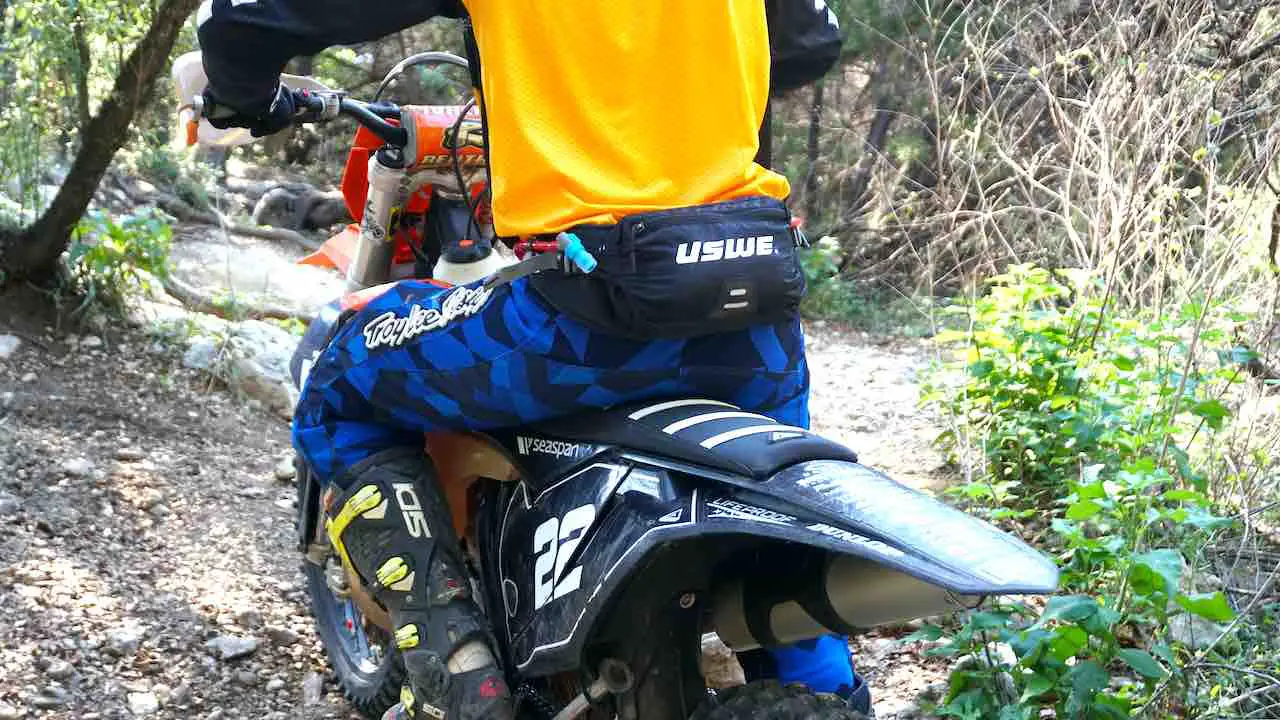
4. Change the Seat Cover or Pants for Better Friction
Sliding back on the seat during acceleration and cornering is a sure cause for arm pump.
When you sit on the seat during acceleration and braking, the seat material and pants are supposed to hold you in place. If you experience sliding back and forth or side to side in your pants, something is wrong.
Start with your pants. Are they too large? Pants that are too large, especially around the crotch area, will cause you to move inside the pants in acceleration, deceleration, and cornering. A tighter fitting pants will help you stay positioned better and you don’t have to grip the handlebars to stay on the dirt bike.
The seat itself and the seat cover material can also cause you to slide on the dirt bike. Consider a different seat cover with strips and better gripping material to feel more planted on the seat.
Make sure to read out tips for choosing the perfect dirt bike seat and seat covers to find a better dirt bike seat setup.
5. Wear Well-Fitting Riding Gear
Since arm pump is caused by restricted blood flow, it’s important to wear gloves, padding, and jerseys that are not preventing or slowing down the blood flow in your arms.
Check that your gloves are fitting correctly and that they are not too tightly strapped around your wrists. You can leave the glove straps open or very loose while riding.
Test and try different gloves that have more or less padding in the palm area. Make sure the gloves are a good fit—too large gloves tend to cause more issues than smaller, more tight fitting gloves.
Check the elbow pads, especially if you wear longer pads that cover your forearms. Tight elbow pads covering forearms are a common cause for arm pump.
Sometimes, a too tight jersey or a backpack around your arm pit area can slow down the blood flow and make arm pump worse. So, wear a jersey that is loose around the armpits. And if you’re wearing a dirt bike backpack, hydration pack, or chest plate, make sure they are not tight around the shoulder and armpit area.
Read more about what to take into account when choosing dirt bike gear in our guide for essential dirt bike gear for trail riding.
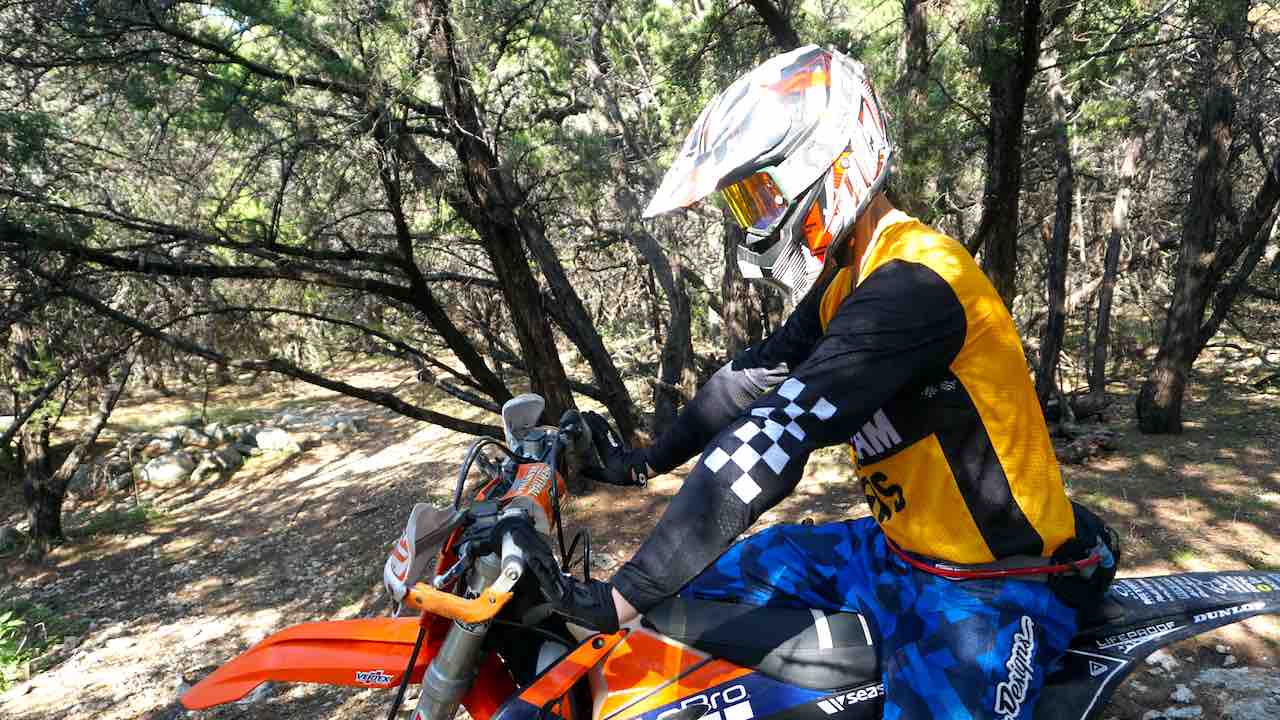
6. Ride Regularly, Exercise, and Stretch
Riding your dirt bike regularly can help prevent and reduce arm pump. This is true as most motocross and dirt bike riders suffer from arm pumping when they are back riding after a long period of rest.
Riding regularly applies also to beginner riders experiencing forearm pumps. In addition, beginners usually benefit from simply riding more. Over time, the muscles are getting stronger and as their technique improves, the arm pump usually becomes very manageable. Experience helps in this case.
Now what should you do when you’re riding and the arm pump hits? When you feel like your arms pumping up, slow down but don’t stop riding. This trains your muscles to push through it for a bit longer. As a result, you will last longer than before each time you ride. If the pain gets worse, stop riding. And if the pain gets even worse, take a few days off.
What Other Sports Should I Do To Prevent Arm Pump?
Beside riding your dirt bike, any kind of exercising and endurance training will also help as they improve your cardiovascular health. Jumping a rope, mountain biking or riding a bicycle, hiking, or jogging will all improve your cardiovascular fitness and help you get rid of arm pump.
Another great way to fight arm pump is to increase the number of blood capillaries in your muscles. The key is to do cardiovascular sports that involve the muscles of your arms, such as swimming, rowing, or elliptical. When your body and your arm muscles get more capillaries, the blood flow will increase and the pain in your forearms will reduce.
Some light weight lifting can also reduce symptoms. However, avoid exercises that primary build muscle volume or only focus on maximum strength. Also avoid pumping triceps, biceps, and chest and focus instead on your core and lower body. Many pro-level riders avoid muscle volume building exercises since the larger muscle volume can make arm pumping worse.
Climbing is also a good way to prevent arm pump. Climbing is an isometric exercise that basically means holding a position under strength for an extended time. This is similar to dirt bike gripping and it helps increase muscle strength.
Finally, stretching forearms, fingers, and palms can also bring relief to many riders. When you stretch, the fascia becomes more elastic allowing more mobility to your muscles and resulting in less compression. Performing stretching before and after a ride day and the following day helps to remove build up and to relax the muscles while increasing blood flow.
7. Keep Hydrated and Follow a Good Diet
Drinking lots of fluids well before the ride day or race day is an important preventative action against arm pump. If your muscles are poorly hydrated, they tend to be more rigid making the problem worse.
So drink a lot prior and during dirt bike riding. Wearing a hydration pack is a great way to stay hydrated on the trails. Check out our article about best dirt bike backpacks for trail riding to find out our tested favorites.
Remember also to add electrolytes and salts into your hydration plan. This will help you ride longer without fatigue. We like the sports hydration tablets with electrolytes (such as by Nuun) and adding them to the drinking water or mixing them into the hydration pack.
In addition to keeping hydrated, following a good diet is important. Eating foods high in nitrates can also help. Nitrates help blood vessels dilate, holding more blood in them and increasing blood flow. Some of the foods with high nitrate concentres include:
- Green, leafy vegetables (like spinach, mustard greens, arugula, kale, Swiss chard, and lettuce)
- Beetroot
- Radishes
- Turnips
- Watercress
- Bok choy
- Chinese cabbage
- Kohlrabi
- Chicory leaf
- Celery
- Onion
- Garlic
Certain foods, such as fatty meals, will restrict blood flow and impair artery function. So, you want to skip bacon and eggs for breakfast the morning before a ride day. You should also avoid oily foods, as oils make blood sticky, thus slowing blood flow.
You want to keep this in mind also when selecting the snacks for the ride day. Always check the ingredients and avoid oils and saturated fats.
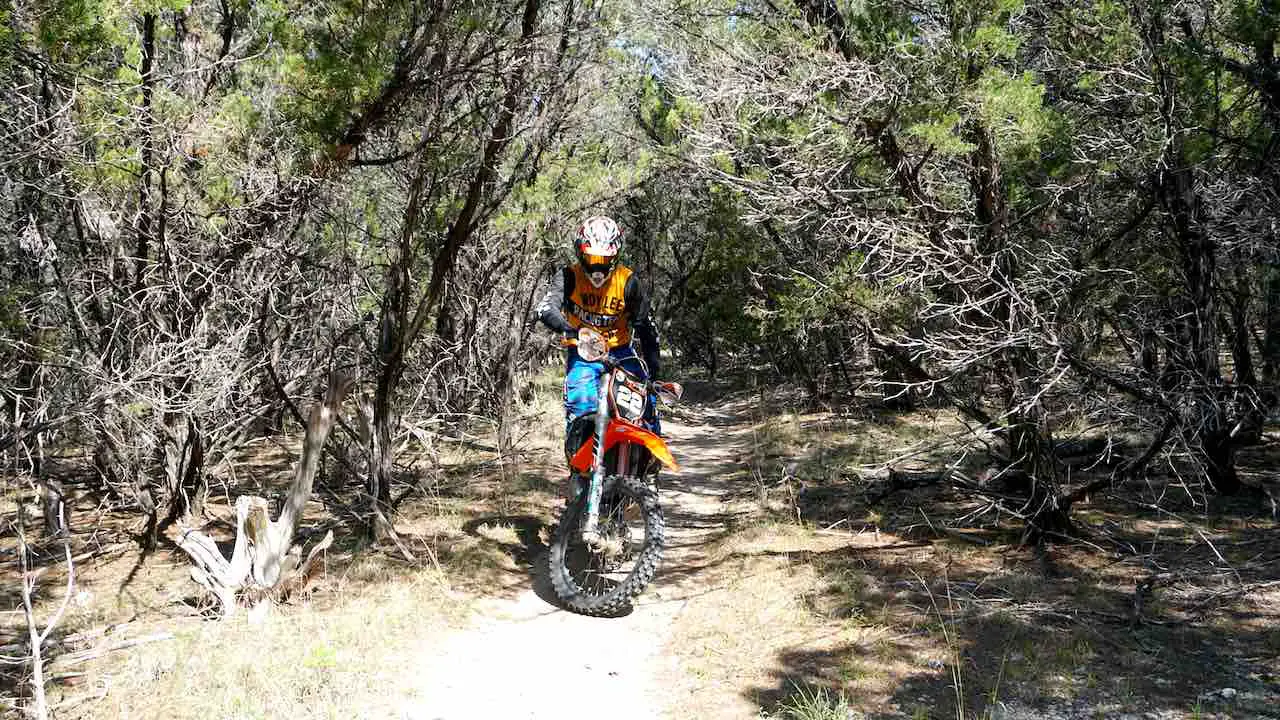
8. Warm Up Before Riding
Warming up prior to hitting a single track is probably one of the best ways to prevent arm pump. There are several different ways to warm up and ease your way into the first lap. Some like stretching, small runs, or a slower-paced sighting lap.
The key for many riders is to be able to warm up between 10 to 20 minutes with increased heart rate. The goal is to slowly increase the heart rate and blood flow around your body. This will warm up the muscles and make them ready for an increased blood flow.
You can also warm up while riding, but it means taking things very slow. Play around the parking lot area and practice basic techniques. Stop often and relax your hands often. This is a great way to increase your basic skills while warming up at the same time.
Try these exercises prior to your next ride:
- Ride figure eights. Try to ride the dirt bike around a figure eight as slow as you can and standing without putting your feet down.
- Practice wheelies. Pop small, controlled wheelies as slowly as you can.
- Practice static balance. Check out our recommended top 5 static balance exercises to improve trail riding.
- Practice pivot turns. With pulling a wheelie, turn 90 to 180 degrees.
9. Cool Down and Recover
If you experience frequent arm pump, cooling down is as important as warming up. It can help manage the pain and symptoms as well as speed up the recovery.
In addition, you can try keeping ice on the forearm to help reduce the swelling and promote the healing process. It can also work well between rides to reduce the pain.
Massaging the muscles helps some riders but makes the condition worse for others. If massaging works for you, make sure that you push the fluid and knots toward your heart.
It’s important to try different things to find out what works for you. Arm pump seems to manifest different symptoms for different riders so be open-minded to try out other methods.
10. Improve Your Riding Position
A correct riding position and technique can greatly improve arm pump symptoms. Most beginner riders tend to experience arm pumping when starting the sport, but over time symptoms ease or disappear completely. Many factors affect the overall causes for arm pump, but a good riding position is key to preventing it.
Pay attention to when you start experiencing forearm pumps. Is it right after the start of the ride, is it affecting both hands? These questions may help to find out what is going on and why it is happening.
Pay attention to how much you are sitting and standing on the dirt bike. Are you able to relax on the bike? Is the handlebar ergonomics supporting your ideal riding position?
You can practice your riding position while setting the dirt bike on the center stand and hopping on the dirt bike. Practice you forward sitting position, standing in the middle and inspect your position. You can take a picture of yourself to further analyze your posture.
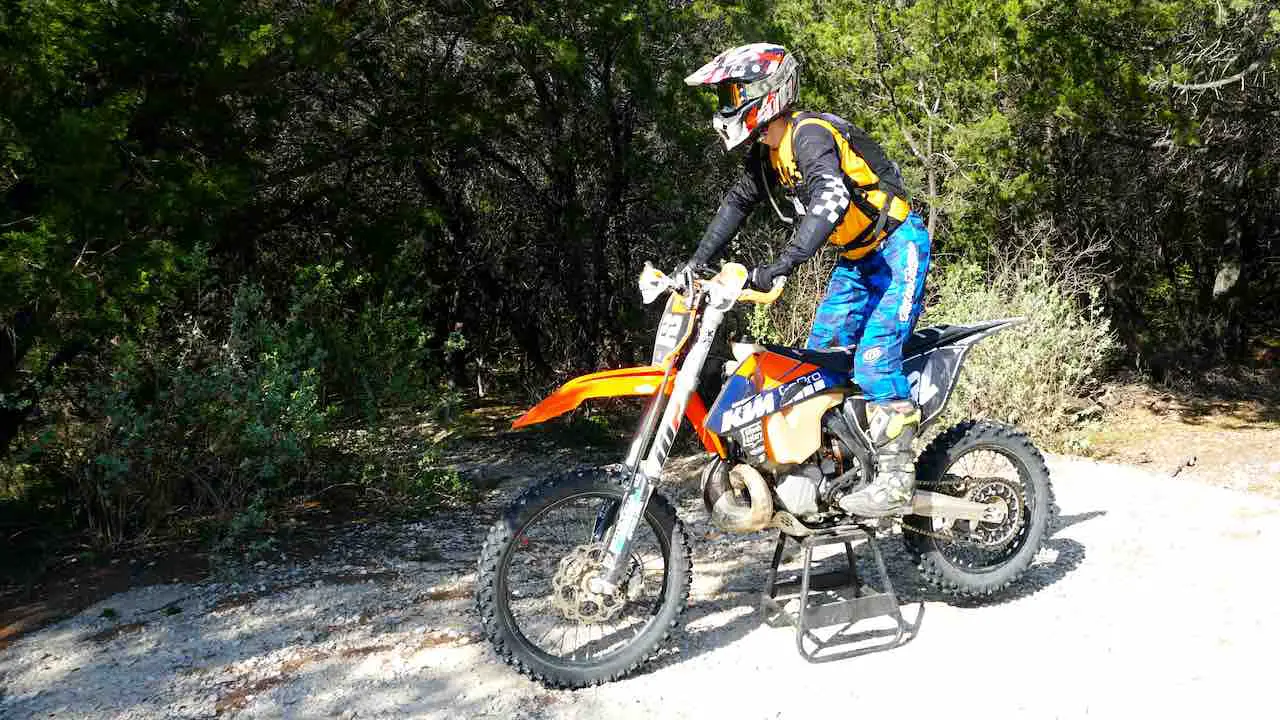
11. Ride Relaxed
Most importantly, ride relaxed. Arm pump is quickly getting worse when you use a death grip on the handlebars and are not able to relax your hands while riding.
To find a relaxed riding flow, you can practice the feeling in the parking lot or on a track that is very easy. While riding, focus on “letting go” of the handlebars and gripping the bike with your “core”.
You can achieve this by gripping the dirt bike with your knees and leaning into the dirt bike in a way that helps you put less weight on your arms and the handlebar area. This allows you to loosen the grip and relax.
When you feel the arm fatigue setting in, slow down and relax for the next minute. Try riding as smooth and as controlled as possible while keeping a relax feeling in your hands. When the arm pump reduces you have found the effective grip strength and position that increases blood flow. Keep this relaxed style and slowly add speed. Practice and repeat.
What Is an Arm Pump Surgery?
Some riders suffer from a severe arm pump and are not able to relief the symptoms no matter what they do. In this case, an arm pump surgery may be the only option. It is an aggressive surgery that keeps the rider off the dirt bike for weeks but it allows them to keep riding.
The basic idea of an arm pump surgery or fasciotomy or fasciectomy is to release the fascia of the muscle in the arm. The fascia or the connective tissue covering the muscle can either be split or removed. As a result, the muscle has more room to grow, there will be less pressure, and the blood vessels will not get compressed. This maintains a better blood flow in and out of the forearms and you get to keep a pain-free hand, throttle and clutch control.
An arm pump surgery is usually performed under a general anaesthetic. After the procedure, the arm is bandaged (no splint is required) and the patient must rest the arm. Active mobilization exercises are important during the recovery period. Most riders can get back on the dirt bike at four to six weeks after surgery.
Many riders have gone through the arm pump surgery and it has become popular especially among professional motocross racers. In 80–90% of the cases, the outcome is successful and the riders have been very happy with the results. And most importantly, they got back on the tracks and trails and riding pain free.
Conclusions
For most riders, arm pump is an unavoidable part of dirt bike riding. It’s not serious and everyone experiences it regularly so there’s really no need to worry about it.
By following these 11 steps, you can control and reduce its impact on your ride—and sometimes even get rid of arm pump completely. The key is to keep riding and bettering your riding techniques while testing different dirt bike setups to help prevent arm pump.
Say goodbye to arm pump and keep riding!
Read next:
- How to prevent carpal tunnel when dirt bike riding
- Single track riding tips for beginners
- What is a Rekluse clutch on a dirt bike?
- Essential dirt bike gear for trail riding
- How to set up dirt bike suspension for trail riding
- Setting up dirt bike handlebars for trail riding
- 4 tips for choosing the perfect dirt bike seat and seat covers
